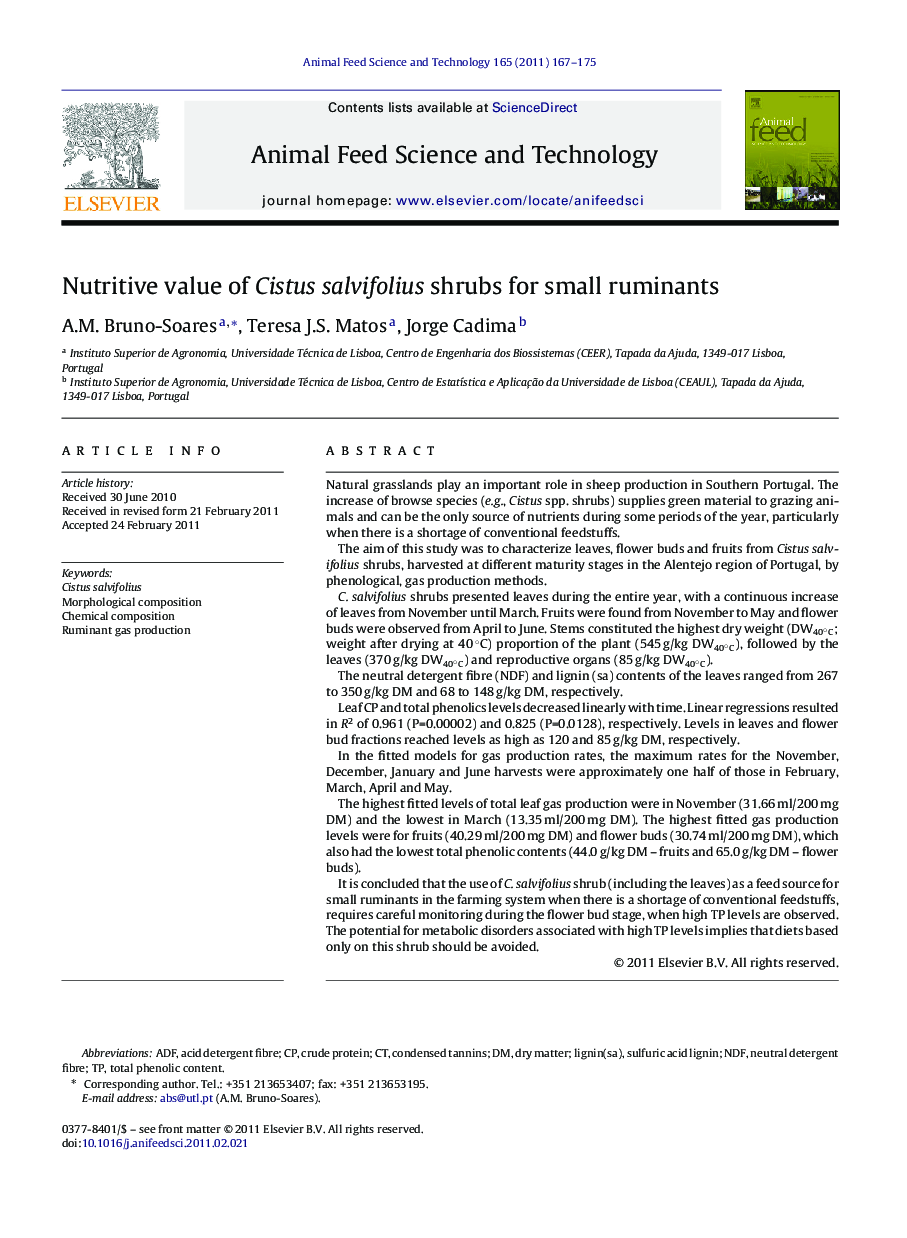| کد مقاله | کد نشریه | سال انتشار | مقاله انگلیسی | نسخه تمام متن |
|---|---|---|---|---|
| 2420063 | 1552431 | 2011 | 9 صفحه PDF | دانلود رایگان |

Natural grasslands play an important role in sheep production in Southern Portugal. The increase of browse species (e.g., Cistus spp. shrubs) supplies green material to grazing animals and can be the only source of nutrients during some periods of the year, particularly when there is a shortage of conventional feedstuffs.The aim of this study was to characterize leaves, flower buds and fruits from Cistus salvifolius shrubs, harvested at different maturity stages in the Alentejo region of Portugal, by phenological, gas production methods.C. salvifolius shrubs presented leaves during the entire year, with a continuous increase of leaves from November until March. Fruits were found from November to May and flower buds were observed from April to June. Stems constituted the highest dry weight (DW40°C; weight after drying at 40 °C) proportion of the plant (545 g/kg DW40°C), followed by the leaves (370 g/kg DW40°C) and reproductive organs (85 g/kg DW40°C).The neutral detergent fibre (NDF) and lignin (sa) contents of the leaves ranged from 267 to 350 g/kg DM and 68 to 148 g/kg DM, respectively.Leaf CP and total phenolics levels decreased linearly with time. Linear regressions resulted in R2 of 0.961 (P=0.00002) and 0.825 (P=0.0128), respectively. Levels in leaves and flower bud fractions reached levels as high as 120 and 85 g/kg DM, respectively.In the fitted models for gas production rates, the maximum rates for the November, December, January and June harvests were approximately one half of those in February, March, April and May.The highest fitted levels of total leaf gas production were in November (31.66 ml/200 mg DM) and the lowest in March (13.35 ml/200 mg DM). The highest fitted gas production levels were for fruits (40.29 ml/200 mg DM) and flower buds (30.74 ml/200 mg DM), which also had the lowest total phenolic contents (44.0 g/kg DM – fruits and 65.0 g/kg DM – flower buds).It is concluded that the use of C. salvifolius shrub (including the leaves) as a feed source for small ruminants in the farming system when there is a shortage of conventional feedstuffs, requires careful monitoring during the flower bud stage, when high TP levels are observed. The potential for metabolic disorders associated with high TP levels implies that diets based only on this shrub should be avoided.
Journal: Animal Feed Science and Technology - Volume 165, Issues 3–4, 12 May 2011, Pages 167–175